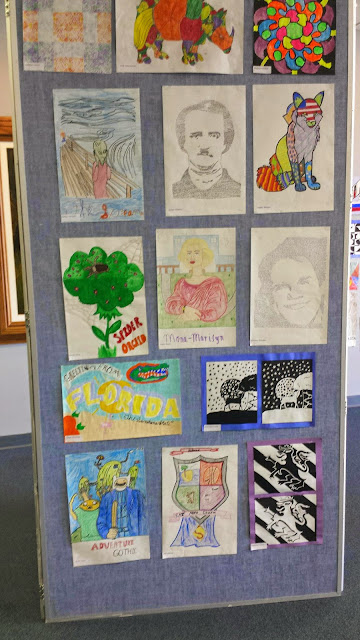Hexagons are 6 sided geometric shapes. A hexaflexagon is a hexagon that can flex into different orientations! First discovered by Authur Stone in 1939, I discovered this for the first time at an art teacher conference at a presentation by Marilynne Bradley. This mathmatical model is a folded paper figure that flexes, sort of like a kaleidoscope. There are even premade templates on the internet. Here is one based on Monsters Inc. characters.
In class, we use a compass to mark out and create 10 equilateral triangles to make the paper model. here are some pics to explain how this happens.
I set the compass to 6 diameter, and as long as that stays the same you should be able to swing forward and backward to mark the 3 corners of a equilateral triangle.






















































